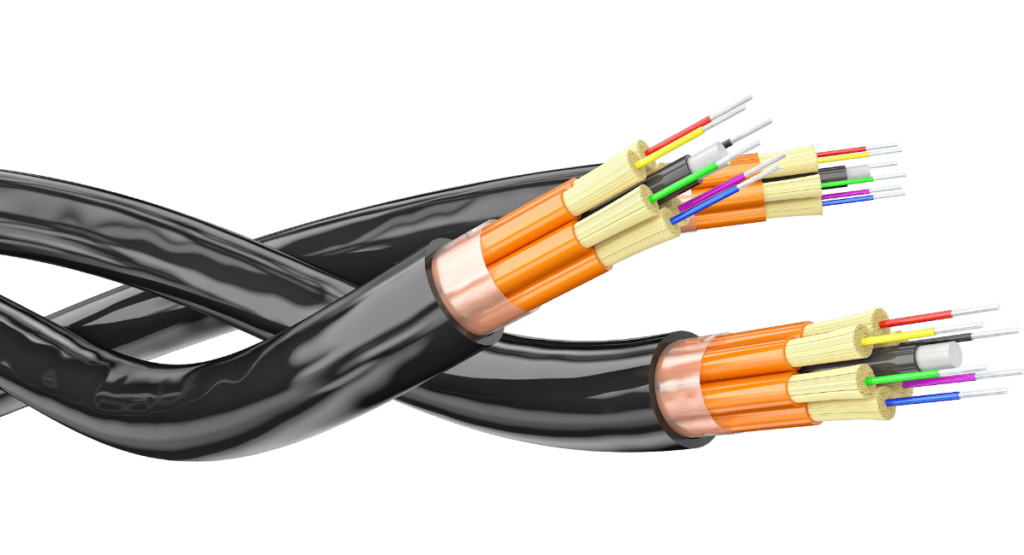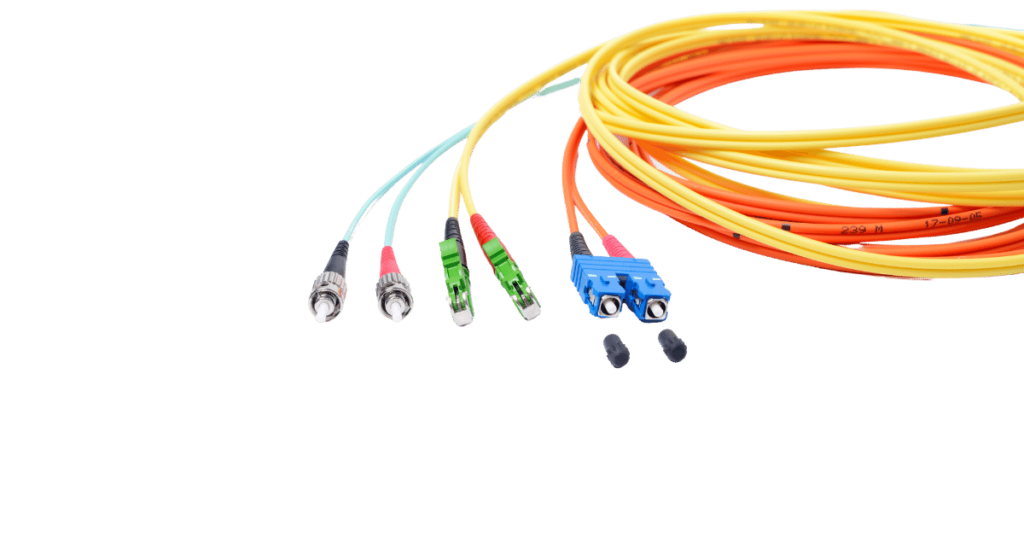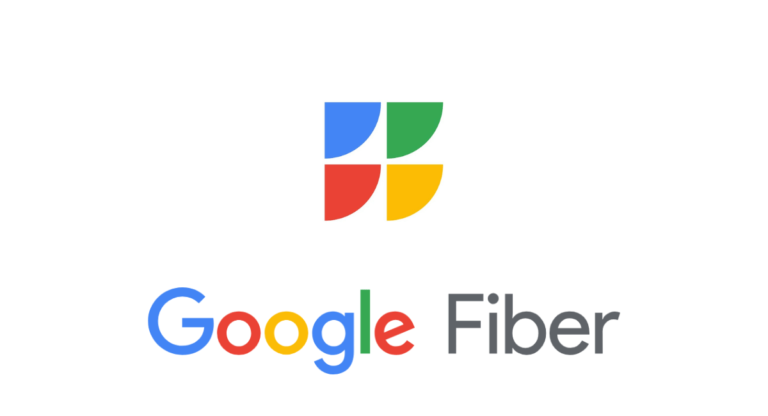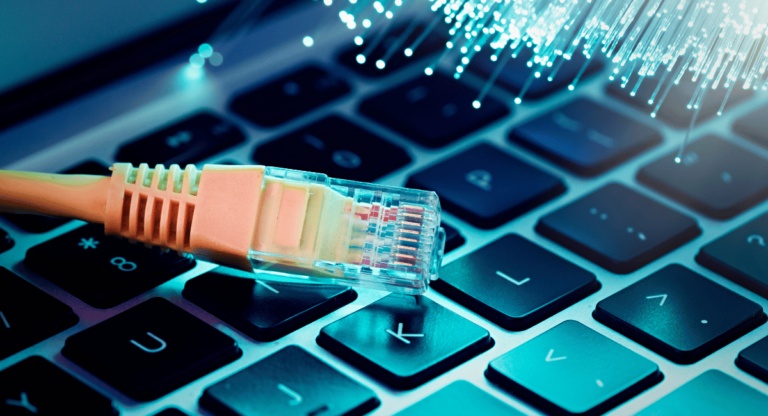What Is Fiber Optic Cables? – [In Brief]
Fiber optic cable is a type of communication cable that uses optical fibers to transmit data in the form of light pulses.
Fiber optics is a technology that uses glass or plastic fibers to transmit data as light pulses. Fiber optic cables are used in various applications, including telecommunications, computer networks, and medical imaging.
This article is about Fiber Optic Cable in general, if you’re looking for fiber optic for the internet you can check this article: Fiber Optic Internet

Here are some of the critical features of fiber optic cables:
- High bandwidth: Fiber optic cables can support much higher bandwidth than copper cables. This means that they can transmit more data per second, which is essential for applications that require high-speed data transfer, such as video streaming and online gaming.
- Long transmission distances: Fiber optic cables can transmit signals over much longer distances than copper cables without losing signal quality. This makes them ideal for applications that require long-distance data transmission, such as undersea cables and long-haul networks.
- Immunity to electromagnetic interference: Fiber optic cables are immune to electromagnetic interference (EMI), which can degrade the signal quality of copper cables. This makes them a good choice for applications that are located in areas with high levels of EMI, such as near power lines or in industrial settings.
- Security: Fiber optic cables are more secure than copper cables because they are difficult to tap. This makes them a good choice for applications that require high levels of security, such as military communications and financial transactions.
Why Fiber Optic Cables?

Speed:
Fiber Optic: Offers incredibly high speeds, often reaching up to 1 Gbps or higher, providing an exceptional internet experience.
Reliability:
Fiber Optic: Highly reliable and immune to interference, resulting in stable connectivity with minimal outages or slowdowns.
Availability:
Fiber Optic: Requires a dedicated fiber optic network, with coverage expanding but not yet universally available.
Performance:
Fiber Optic: Ideal for bandwidth-intensive activities like online gaming, streaming HD videos, and large file downloads, offering low latency and high bandwidth capacity.
Here are some of the common uses of fiber optic cables:
- Telecommunications: Fiber optic cables are used to transmit voice, video, and data over long distances. They are the backbone of the Internet and are used by telecommunications companies to connect their networks.
- Computer networks: Fiber optic cables are used to connect computers in local area networks (LANs) and wide area networks (WANs). They are also used to connect servers and storage devices.
- Medical imaging: Fiber optic cables are used in medical imaging devices, such as endoscopes and laparoscopes. They allow doctors to see inside the body without making incisions.
- Industrial automation: Fiber optic cables are used in industrial automation systems to transmit data from sensors and controllers. They are also used to connect machine tools and other equipment.
Conclusion:
Fiber optic cables are a versatile technology with a wide range of applications. They are becoming increasingly popular as the demand for high-speed data transfer and security increases.
![What Is Fiber Optic Internet? – [In Brief]](https://radouane.me/hub/wp-content/uploads/2023/07/Fiber-Optics-Internet-768x416.png)

![What Is Fiber Optic HDMI Cable? – [In Brief]](https://radouane.me/hub/wp-content/uploads/2023/07/Fiber-Optic-HDMI-Cable-768x416.png)

2 Comments